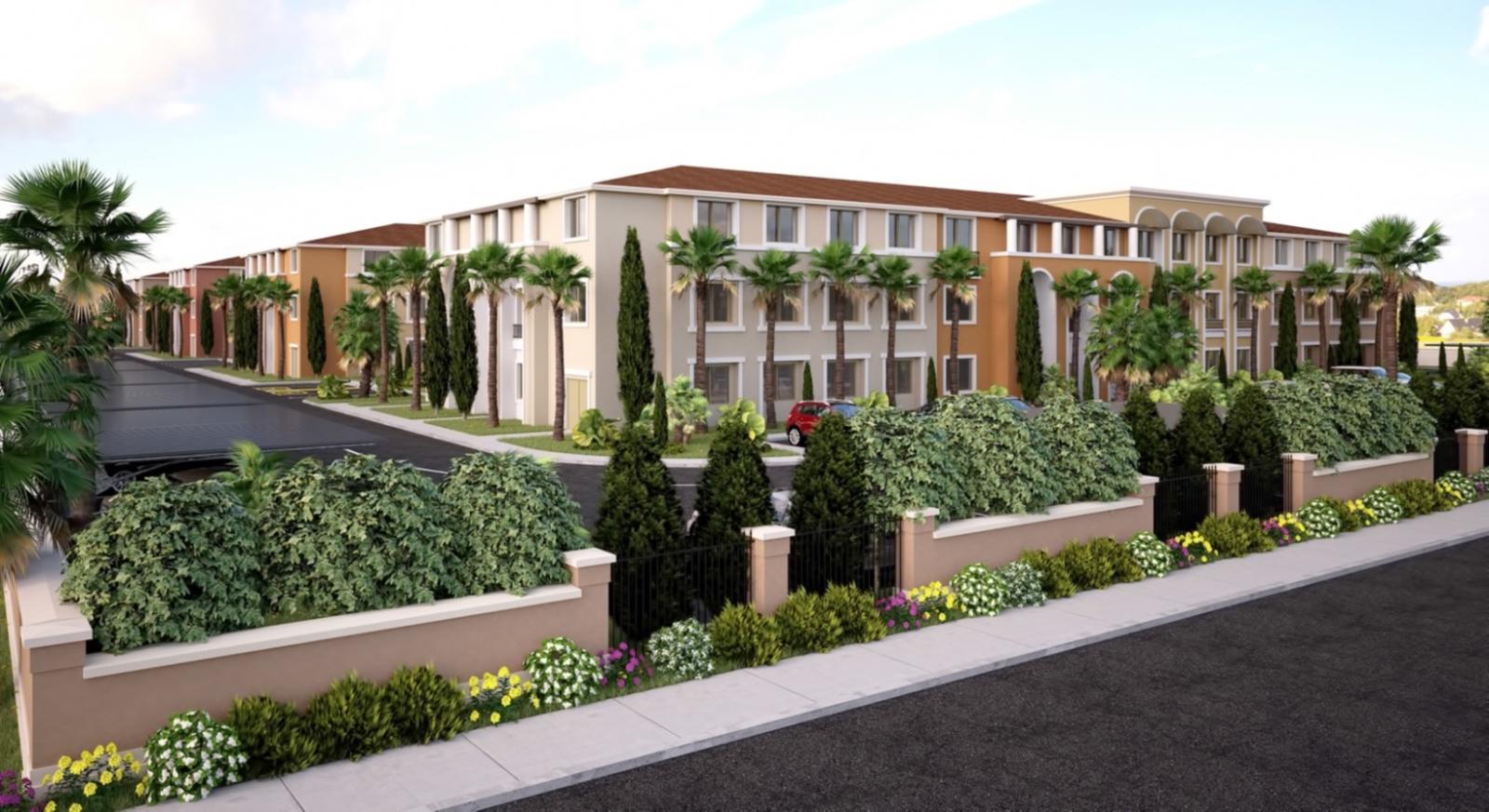In Southern Nevada, 195 new apartments are set to offer below-market rates for seniors earning less than 60% of the area median income (AMI), 20 of which are set aside for those earning less than 30% of the area median income. These units are the result of a challenging five-year journey marked by struggles with permitting and site control, alongside significant but initially invisible process improvements.

Clark County’s Community Housing Fund supported the project of all-senior housing in Las Vegas, Nevada. This bond project was selected and nominated by Clark County, and developed by Ovation and its non-profit partner, Coordinated Living of Southern Nevada, (CLSN). The site was chosen in part because of its access to grocery stores and bus lines in a difficult to develop area.
The land for Pebble and Eastern was owned and managed by the Bureau of Land Management (BLM), a federal agency overseeing public lands, some of which in southern Nevada have become much closer to developed areas than initially planned. The Southern Nevada Public Lands Act provides for the transfer of highly discounted land to State and Local Governments if the land is used for affordable housing. Given the difficulties of developing new affordable housing and rising demand, the county viewed this public land as a potential solution.
However, the process took much longer than expected. The County awarded the project to Ovation and CLSN in November 2019 through a competitive RFP process, after years of planning already in place.
With the help of Ovation and CLSN, Clark County submitted the nomination application to BLM in February 2020, but the transfer of patent was only granted in April 2023. The project then faced an additional five months of regular permitting.
Despite the Southern Nevada Public Lands Act, designed to expedite BLM land transfers, delays persisted. The COVID-19 pandemic exacerbated staffing issues at the County, and with only four deals under this legislation, communication problems further hindered progress as site control was finalized.
Lorri Murphy from Ovation shared some valuable lessons for future developers based on this experience:
- Multi-jurisdictional Application Approval: BLM staff depended on HUD for guidance, which required determining the appropriate department—local, state, or federal—to sign off. This led to a delay far exceeding the 60-day approval requirement. An MOU signed as a result allows the HUD field director to authorize nomination applications submitted to BLM, paving the way for smoother future developments.
- Infrastructure permitting and ownership: Typically, local jurisdictions like water districts require documents signed by the owner. With public land, BLM remains the owner, and it is crucial to confirm whether the developer can sign on behalf of BLM, as BLM does not sign housing agreements. For Pebble and Eastern, the only hold-up was the water district, which required completion of the patent transfer before finalizing the permitting process.
- Notice of Realty Action (NORAs): After HUD approval to process, BLM begins its process which involves publishing the Notice of Realty Action. These notices go out in the federal register and local newspapers, and like other federal programs, allow public comment followed by response if there are objections to the project. Keep this timeline in mind during development, as estimates lately have been around 6-8 months until the NORA is ready to be published but are sometimes longer than 12 months. Reviewing project details carefully to eliminate any controversy in advance can speed up this timeline.